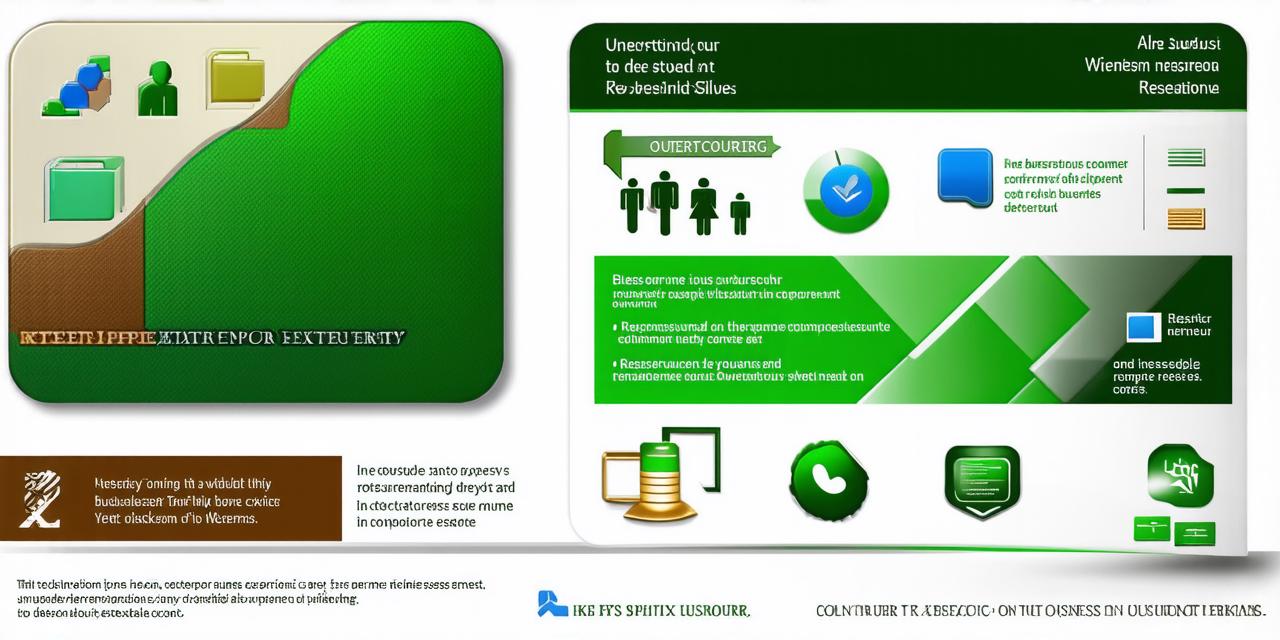What is Outsourcing?
At its core, outsourcing refers to the practice of transferring some or all of a company’s operations, processes, or functions to an external vendor or contractor. This can include anything from manufacturing and logistics to customer service and IT support. The goal of outsourcing is to leverage the expertise, resources, and capabilities of external providers to improve the efficiency, effectiveness, and profitability of a company’s operations.
Benefits of Outsourcing
There are several benefits to outsourcing in business, including:
- Cost savings: One of the main reasons companies outsource is to reduce costs. By assigning certain tasks or processes to external vendors, businesses can take advantage of lower labor rates, reduced overhead, and economies of scale that may not be available in-house.
- Expertise: Outsourcing also provides access to specialized expertise and knowledge that may not be available within a company. For example, a business may outsource its IT support to a vendor with deep experience in a particular technology or software platform. This can help the company to leverage this expertise and improve the efficiency of its IT operations.
- Increased efficiency: By delegating certain tasks or processes to external vendors, businesses can free up internal resources to focus on core competencies and strategic initiatives. This can lead to increased productivity, faster time-to-market, and improved customer satisfaction.
- Flexibility: Outsourcing also provides companies with greater flexibility in terms of workforce planning and resource allocation. For example, an e-commerce company may outsource its manufacturing operations during peak periods and bring them back in-house during slow times, allowing the company to adjust its workforce and resource allocation as needed.
Challenges of Outsourcing
While outsourcing can provide many benefits to businesses, it is not without its challenges. Some of the key challenges of outsourcing include:
- Communication and coordination: Effective communication and coordination are critical to successful outsourcing relationships. Businesses must be able to clearly communicate their requirements and expectations to their vendors, and vendors must be able to meet those requirements in a timely and efficient manner.
- Quality control: Ensuring that vendors meet the required quality standards can be challenging in an outsourcing relationship. Businesses must establish clear performance metrics and expectations, and monitor vendor performance regularly to ensure that they are meeting those expectations.
- Intellectual property protection: Outsourcing can also pose risks to a company’s intellectual property (IP). Businesses must take steps to protect their IP, such as by signing non-disclosure agreements (NDAs) with vendors and conducting regular audits of vendor activities.
- Cultural differences: Cultural differences can also pose challenges in an outsourcing relationship. Businesses must be aware of cultural differences and take steps to mitigate them through effective communication and training.
FAQs
1. What are some common outsourcing tasks or processes?
Manufacturing, logistics, customer service, IT support, HR, accounting, and finance are some common outsourcing tasks or processes. However, businesses can outsource almost any task or process that is not critical to their core operations or competitive advantage.
2. How do I choose the right vendor for my outsourcing needs?

It’s important to carefully evaluate potential vendors based on factors such as their expertise, experience, resources, cost, and alignment with your business goals. You may also want to consider conducting a proof of concept project with a small portion of your work before committing to a larger relationship. This will allow you to test the vendor’s capabilities and ensure that they are a good fit for your needs.
3. How do I manage and monitor my outsourcing relationship?
Clear communication, regular check-ins, and performance metrics are key to managing and monitoring an outsourcing relationship effectively. You may also want to consider using project management tools or software to track progress and ensure that your vendors are meeting their obligations. It’s important to establish clear expectations and communicate regularly with your vendors to ensure that everyone is on the same page.
4. What are some potential risks associated with outsourcing?
Communication and coordination issues, quality control challenges, IP protection concerns, cultural differences, and data security risks are some potential risks associated with outsourcing. It’s important to be aware of these risks and take steps to mitigate them through careful planning and effective management practices. For example, you may want to consider conducting regular audits of vendor activities to ensure that they are not compromising your IP or data security.
Summary
In conclusion, outsourcing can provide significant benefits to businesses looking to improve their efficiency, reduce costs, and achieve their goals. However, it is not without its challenges, and companies must be aware of these risks and take steps to mitigate them through careful planning and effective management practices. By understanding the benefits and challenges of outsourcing, businesses can make informed decisions about whether this strategy is right for their needs. It’s important to remember that outsourcing is not a one-size-fits-all solution, and businesses must carefully evaluate their specific needs and requirements before making any decisions.
